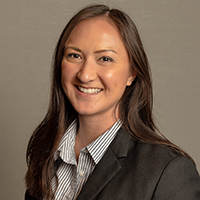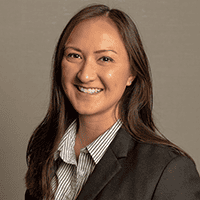
How Pacific Mercantile Bank Stumbled Onto Its Most Profitable Business Line
Executives at Pacific Mercantile Bancorp started with a question: “What do we see in the future? What should we do now to plan for that eventuality?”
Those questions led management at the Costa Mesa, California-based bank to think about how it would respond if a turn in the economy impacted its business customer base. It also led executives at the bank to financial technology firm P2Binvestor, or P2Bi, and a relationship that has become the most profitable and fastest growing business line at Pacific Mercantile.
Executives at the $1.4 billion bank suspected that their business customers’ balance sheets could suffer in a distressed environment. Enter factoring.
Pacific Mercantile already has experience with asset-based lending (ABL), which is similar to factoring, says chief credit and risk officer Thomas Inserra. The bank decided to seek a “factoring-like solution” that could leverage technology and create efficiencies for both its ABL business line and its factoring offering.
Inserra knew the strategy exposed the bank to new risks. That’s why relatively few banks offer the service. But after several months of due diligence, he narrowed down the potential financial technology partners in the space to three names.
It then decided to run an experiment with an existing client who needed a factoring-like solution, Inserra says. The customer initially picked another company that didn’t work out, before selecting P2Bi. Pacific Mercantile and P2Bi were co-lenders in the new loan facility to the borrower, with P2Bi serving as lead. Factoring requires intensive monitoring of the relationship; P2Bi’s technology allows Pacific Mercantile to monitor the facility and its servicing of the relationship on a daily basis.
P2Bi was the winner of Bank Director’s 2019 Best of FinXTech Awards for “Best Small Business Solution.” Judges selected winners from the most innovative solutions found in the FinXTech Connect platform; the other finalists were Biz2Credit, which offers a white-label lending platform, and Treasury Prime, which helps banks onboard new accounts.
The factoring-like solution is new, but has already had a major impact. Inserra says it’s the bank’s most profitable and fastest growing business line. It will also help attract new relationships and depositors who want to use the solution, given the importance of customer relationships in asset-based lending. But perhaps more importantly, it allows Pacific Mercantile to be better-positioned to serve customers’ needs ahead of a recession.
“This is an option [our customers are] going to need to have, if and when the market deteriorates,” he says. “We’re using it on a limited basis today, only because there’s not a significant amount of demand, but we view it as preparation for the future.”
Inserra says bank executives became more comfortable with its new partner because of its due diligence process, and recommends similar approaches to executives as more community banks consider fintech relationships. He says the bank first focused on its strategic objectives, and then searched for fintechs whose products could fill the identified gaps. He says the bank looked at half a dozen similar offerings and continues to eye the market as technologies and companies evolve. The bank then used its due diligence process and included a contingency plan if the relationship failed.
“Make sure you do your due diligence and go through your normal processes, like you would to approve any new vendor. How are you going to monitor it? If they don’t perform, what’s your backup plan?” he says. “If P2Bi failed to deliver, we have a contingency plan. We haven’t seen any evidence that’s a risk, but … we always like to have a Plan B.”



